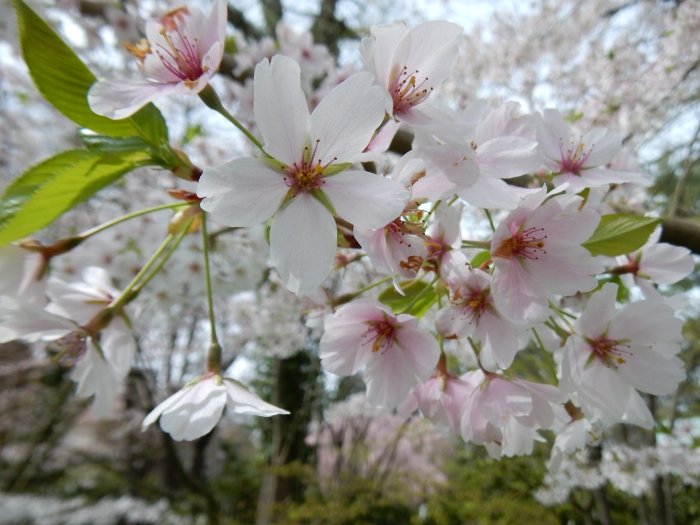Yoshino Cherry
(Prunus ×yedoensis)
Yoshino Cherry (Prunus ×yedoensis)
/
/

Shuvaev
CC BY 4.0
Image By:
Shuvaev
Recorded By:
Copyright:
CC BY 4.0
Copyright Notice:
Photo by: Shuvaev | License Type: CC BY 4.0 | License URL: https://creativecommons.org/licenses/by/4.0 | Uploader: Shuvaev | Publisher: Wikimedia Commons | Title: Prunus_×_yedoensis_in_bloom,_Morris_Arboretum_01.jpg | Notes: User created page with UploadWizard |





























Estimated Native Range
Summary
Prunus ×yedoensis, commonly known as Yoshino Cherry, is a small, deciduous tree that is a garden hybrid of Prunus speciosa and Prunus pendula f. ascendens. The Yoshino Cherry thrives in open woodlands and along forest edges in its native habitat. It typically grows to 5–12 meters (16–39 ft) tall, rarely reaching 15 meters (49 ft). The tree is celebrated for its beautiful spring blossoms, which are fragrant, white to pale pink, and appear in clusters before the foliage emerges. The flowering season is early spring, and the flowers are highly showy, making it a popular ornamental tree. The small cherry fruit is a globose drupe 8–10 millimeters in diameter, providing food for wildlife such as robins and thrushes.
The Yoshino Cherry is valued for its stunning floral display, manageable size, and graceful form, making it a favorite for urban plantings, residential gardens, and public spaces. It is adaptable to a range of soil types but prefers well-drained soils. While it can tolerate part shade, it flourishes in full sun. Notable cultivars include ’Akebono’ (also known as ’Daybreak’), ’Ivensii’, and the weeping form ’Shidare Yoshino’. Gardeners should be aware of potential problems such as cherry leaf spot and other fungal diseases. It is also susceptible to pests like aphids and caterpillars.CC BY-SA 4.0
The Yoshino Cherry is valued for its stunning floral display, manageable size, and graceful form, making it a favorite for urban plantings, residential gardens, and public spaces. It is adaptable to a range of soil types but prefers well-drained soils. While it can tolerate part shade, it flourishes in full sun. Notable cultivars include ’Akebono’ (also known as ’Daybreak’), ’Ivensii’, and the weeping form ’Shidare Yoshino’. Gardeners should be aware of potential problems such as cherry leaf spot and other fungal diseases. It is also susceptible to pests like aphids and caterpillars.CC BY-SA 4.0
Plant Description
- Plant Type: Tree
- Height: 30-40 feet
- Width: 30-40 feet
- Growth Rate: Moderate
- Flower Color: Pink, White
- Flowering Season: Spring
- Leaf Retention: Deciduous
Growth Requirements
- Sun: Full Sun, Part Shade
- Water: Medium
- Drainage: Fast
Common Uses
Bee Garden, Bird Garden, Butterfly Garden, Fragrant, Low Maintenance, Rabbit Resistant, Showy Flowers, Street Planting
Natural Habitat
Open woodlands and along forest edges in Japan
Other Names
Common Names: Cheju Native Flowering Cherry , Potomac Cherry , Japanese Cherry , Tokyo Cherry , 왕벚나무
Scientific Names: Prunus ×yedoensis , Cerasus yedoensis , Prunus ×longistyla , Prunus yedoensis var. perpendens , Prunus yedoensis var. nudiflora , Cerasus ×yedoensis , Prunus ×yedoensis var. angustipetala , Cerasus ×nudiflora , Prunus ×hallasenensis , Prunus ×morioka-pendula
GBIF Accepted Name: Prunus ×yedoensis Matsum.